|
7. Carterocephalus palaemon (Pallas, 1771) / Chequered skipper / Hesperiidae – Hesperiinae
NL: bont dikkopje / D: Bunter Dickkopf, Gewürfelte Dickkopffalter, Gelbwürfeliger Dickkopffalter / F: l’échiquier, l’hespérie du brome
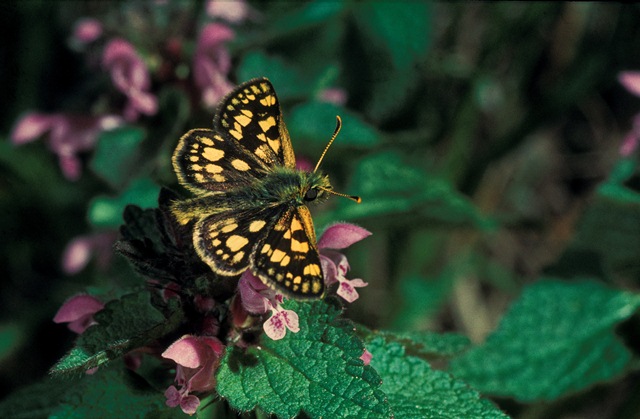 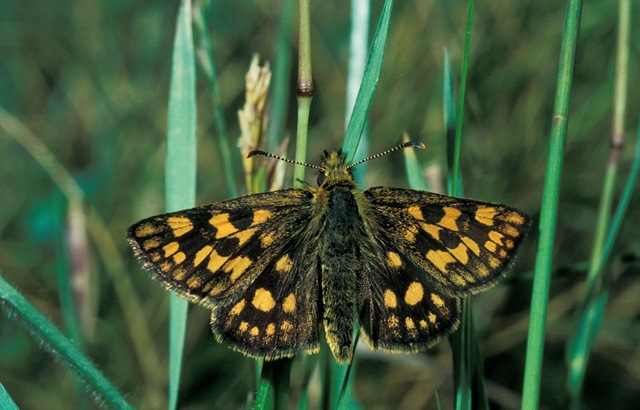 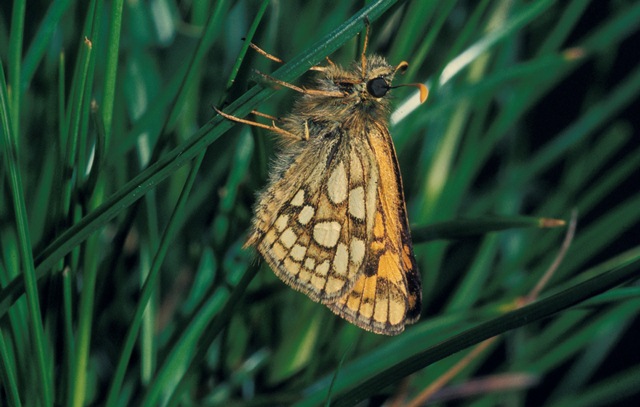
Photographs: Frits Bink ©.
Very small or small, wing length 13 (12-14) mm. In the Benelux it is a locally occurring species that lives in small colonies. The butterflies prefer the gradient between medium tall grass vegetation and wood or shrub, in the open landscape between short and tall grass. It occurs locally in heathland, in bogs along brooklets, marshes, grassland, scrubland and in broad rides in woodland.
Butterfly is on the wing from early-May until late-June and it peaks end-May. The species is known from maritime and severe continental climates, amplitude 5 to 20. Required heat sum is 400°d and maximum tolerated 1300°d. The corresponding climate windows are 20 and 30 weeks.
In the United Kingdom it occurs only in the western part of Scotland, by 1976 it had disappeared from England after a hot and dry summer (Asher et al. 2001: 53-55).
The survival of a population depends mostly on the undisturbed overwintering of the tall grass vegetation.
Ecological characteristics
Behaviour over time
Overwintering: full grown larva, straw-like coloured, in a tube of withered leaf of its host plant.
Reproduction: oviposition starts after 4-6 days when there are 30 (28-34) eggs in the body. Estimated potential production 3.3 times as much.
Larval feeding periods: one, about 12 weeks from end-June until end-September.
Generations: one.
Spreading of risk: a little by variation in time of appearing of the adults.
Life cycle: egg about 10 days; larva 45 weeks; pupa 28 (24-32) days.
Life span of adult: short, 2 weeks.
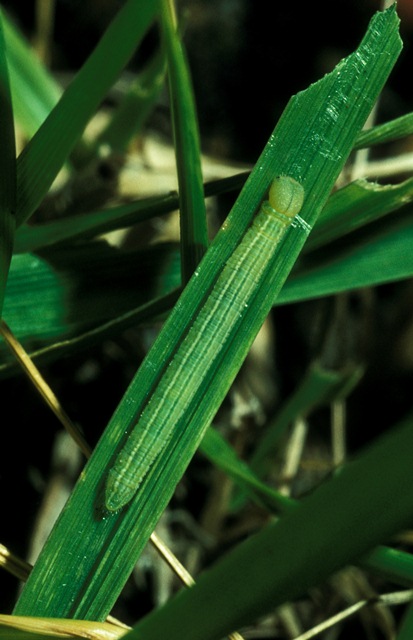 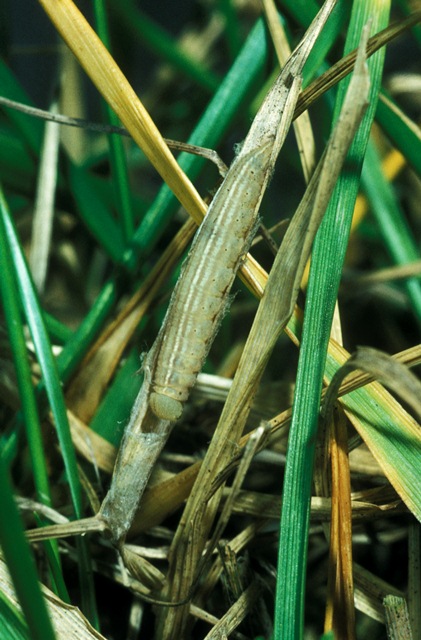
Photographs: Frits Bink ©.
Behaviour in space
From stay-at-home to migrant: usually at a low density at the site.
Finding a mate: the basking male guards its perch and waits for a female.
Orientation in the landscape: on edges between medium tall grass vegetation and shrub or tall grass.
Oviposition: eggs are laid on the upperside of leaves of tall grass.
Defence
Threats from other organisms: the young and overwintering larva lives safely inside a tube.
Threats from the environment: adult rather intolerant of heat and drought and performs well in a cool climate.
Feeding habits
Adult: nectar of all kinds of flowers.
Larva: eat the upper part of the leaf above its tube.
Larval foodplants
Plant species: Poaceae, broad leaved grasses e.g. Brachypodium pinnatum, B. sylvaticum, Calamagrostis canescens, Dactylis glomerata, Festuca gigantea, F. pratensis, Molinia caerulea.
Journal
Rearing experience based on specimens from Baraque de Fraiture, Belgium
Report
21 June 1983: two females captured.
25 June: two females laid a total of 66 eggs; remaining in the body: 12 and 2 eggs.
1 July: eggs hatch.
19 July: a few larvae moved from Molinia to adjoining Festuca gigantea.
11 August: biggest larva 12 mm.
28 August: two larvae nearly full grown.
22 September: one full grown, basking on Festuca pratensis.
25 September: larvae have spun a tube on Festuca pratensis, and are still green in colour.
Overwintered outdoors.
5 February 1984: taken indoors.
12 February: larvae are straw-like in colour, active and moved towards the sunny side of the tussock.
23 February: larvae still creeping around and hiding during cold spells.
29 February: one larva now prepupa.
6 March: first larva pupated.
11 March: second larva pupated.
7 April: first adult appeared.
11 April: second adult emerged.
Table 7-1. Results of dissections

Table 7-2. Collection and observation localities
B, Baraque Michel 580 m, 50° 31’ 10”N – 6° 04’ 24”E; 19 June 2006.
B, Baraque de Fraiture 550 m, 50° 14’ 32”N – 5° 46’ 58”E; 15 June 1980, 19 June 1983, 6 May 2000.
B, Ethe, 240 m, 49° 36’ 25”N – 5° 35’ 50”E; 19 June 1983.
B, Nîsmes, Tiènne-Breumont 215 m, 50° 04’ 40”N – 4° 32’ 35”E; 28 May 1982.
D, Eschweiler 50° 47’ 09”N – 6° 16’ 37”E; 18 June 1983.
D, Blankenheim 50° 22’ 40”N – 6° 41’ 05”E; 20 June 1983.
D, Lorch 300m, 50° 02’ 05”N – 7° 47’ 56”E; 26 May 1986.
D, Staffelstein 50° 05’ 32”N – 11° 01’ 25”E; 16 June 1985.
F, Lorraine, Lion-devant-Dun 300 m, 49° 23’ 40”N – 5° 14’ 03”E; 12 June 1984.
F, Montmédy 217 m, 49° 31’ 07”N – 5° 21’ 33” E; 27 June 2002.
Fig. 7-1. Carterocephalus palaemon, phenogram adapted from Fichefet et al. 2008: 39.
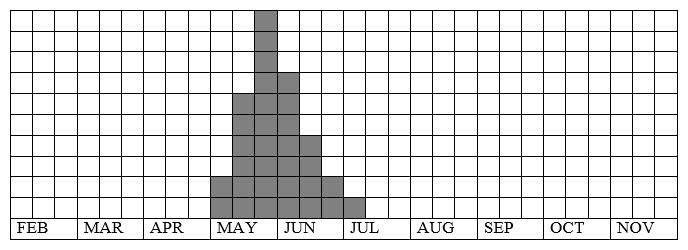
Fig. 7-2. Carterocephalus palaemon, habitat characteristics.
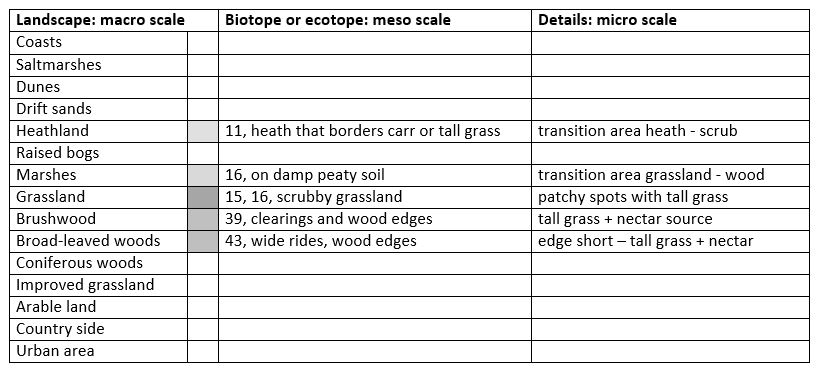
Fig. 7-3. Carterocephalus palaemon, climate matrix, heat-sums 400 - 1300°d.
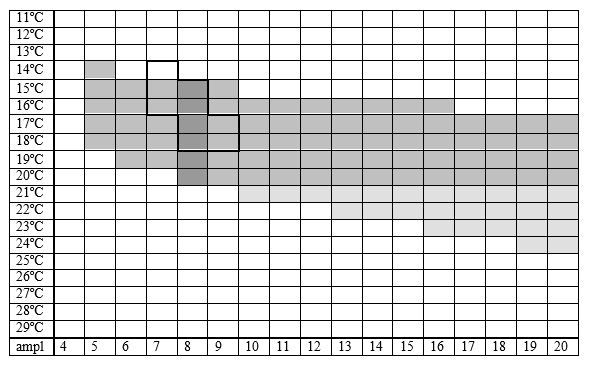
|










